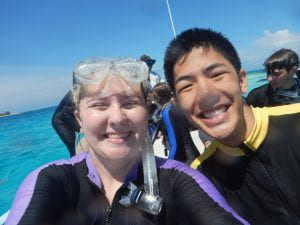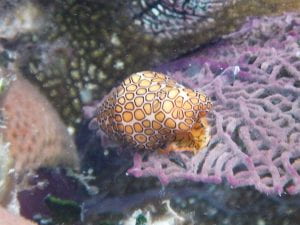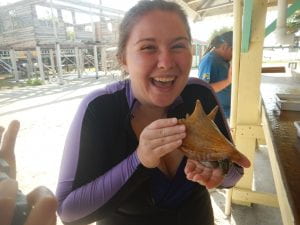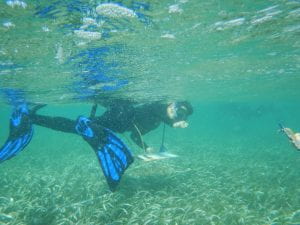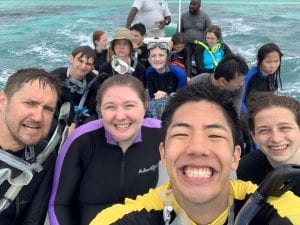Hi!
Today was very long, but good long.
In the morning we collected sea urchin for a project examining reef health. We used urchins as a proxy for herbivory, which we could then use as a proxy for reef health because increased herbivory means decreased turf/macroalgal cover (and algae competes with coral). Pretty much it was an Easter Egg hunt but for sea urchins, and it was exactly the right mix of goal-oriented and challenging for me. Finding urchins wasn’t the hard part, getting them out of their crevices was. I’m still a little surprised how willing I was to stick my entire arm in a crevice and poke around for a spiny thing I couldn’t see, or to grab an urchin perched next to some fire coral and get my whole hand stung (we got the urchin though, so worth it). We spent the afternoon analyzing our data on numbers, sizes, and species of urchins we collected.
Honestly I was completely enthralled by the urchin hunt and wasn’t even looking for molluscs, but we did run into two. Dr. Solomon showed me an Amber Penshell (Pinna carnea), which was awesome because a living bivalve was the last little guy I needed to complete my set (I’ve given up on finding a polyplacophoran). It was actually kind of funny; this morning I was talking to Dr. Solomon and Dr. Shore and we were making our daily “requests” for the wildlife we’d see (I said I wanted a living bivalve).Then on our way back to the boat I saw a weirdly shaped fish…upon investigating it was in fact a squid, a Caribbean Reef Squid (Sepioteuthis sepioidea).
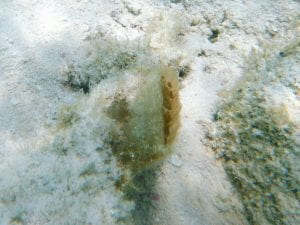
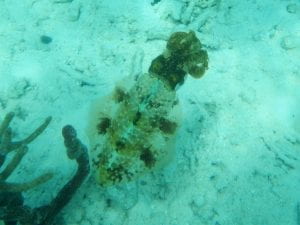
We finished our day with a night snorkel, which unfortunately wasn’t my favorite. It was cool to be in the water under all the stars, but I really couldn’t see anything underwater. My mask was super foggy and we all clustered together so I kept getting kicked in the face (to be fair, everyone kept getting kicked). Also, I lost my dive buddy early on and trying to find him in the dark was impossible. I spent most of the snorkel looking for my buddy instead of looking at the cool night creatures (found him by the end though, with help).
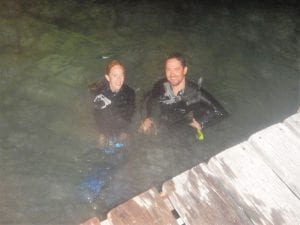
Today was our last day in the water, and tomorrow’s really our last day in Belize. Hopefully we get one last full day of exciting activities and not one full of bug bites.
-Kelsey




